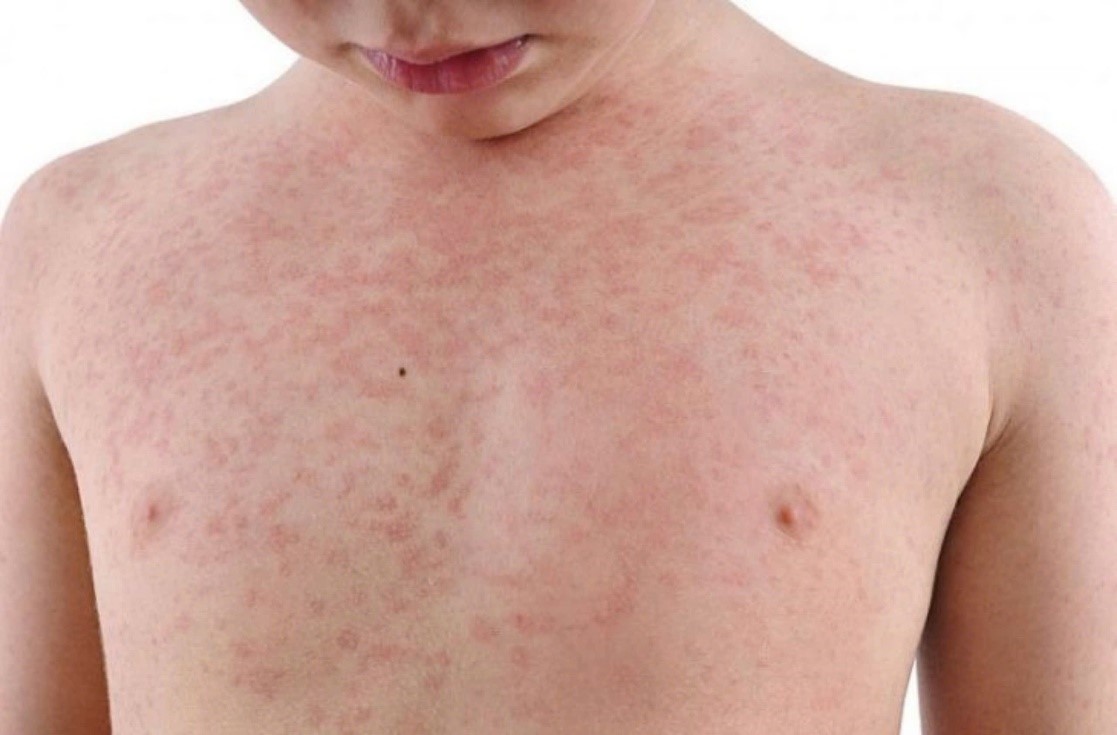Early Warning Signals
The initial phase of measles infection can be deceptively ordinary. Patients typically experience a high fever reaching above 104°F, accompanied by the “three Cs” – cough, coryza (runny nose), and conjunctivitis (red, watery eyes). This prodromal period usually lasts 2-4 days and might be mistaken for a common cold or seasonal flu. The distinction becomes critical when these symptoms persist or intensify, particularly in unvaccinated individuals or during known outbreak periods.
The Distinctive Rash Emerges
The hallmark measles rash follows the prodromal symptoms like clockwork. Beginning behind the ears and on the face, this maculopapular eruption progresses downward, eventually covering the trunk and extremities. What distinguishes this rash is its pattern – individual spots gradually merge together as they spread. Simultaneously, Koplik spots – small white lesions on the inner cheek mucosa – appear as a pathognomonic sign. These spots, resembling grains of salt on a red background, often precede the external rash by 1-2 days.
Beyond the Obvious Signs
Measles manifests beyond its visible symptoms with significant systemic effects. Profound fatigue often overwhelms patients, accompanied by loss of appetite and generalized malaise. More concerning are the potential neurological symptoms, including irritability and photophobia in some cases. The virus temporarily suppresses immune function, creating vulnerability to secondary bacterial infections. This immunosuppression can persist for weeks after apparent recovery, explaining why complications may develop even after the rash begins to fade.
Supportive Care Strategies
Management of measles focuses primarily on supportive measures rather than targeted antiviral therapy. Maintaining adequate hydration becomes paramount, particularly for patients with high fever or reduced intake. Fever management with appropriate antipyretics provides comfort, while vitamin A supplementation has shown benefit in reducing complication rates and mortality, especially in malnourished children. Creating a quiet, dimly lit environment helps patients with photophobia, while monitoring for secondary infections requires vigilance throughout the illness course.
Vaccination: The Shield
Immunization stands as the cornerstone of measles prevention, with the MMR vaccine demonstrating exceptional effectiveness. Two properly timed doses provide approximately 97% protection against infection. Population immunity requires vaccination rates exceeding 95% to prevent community transmission – a threshold increasingly challenged by vaccine hesitancy. For unvaccinated individuals exposed to measles, post-exposure prophylaxis with the vaccine within 72 hours or immunoglobulin within six days may modify or prevent disease development, highlighting the importance of rapid response protocols.
Moving Forward With Knowledge
Understanding measles in its entirety equips healthcare providers and communities with the tools to combat this preventable disease. From recognizing the earliest symptoms to implementing proper management and prevention strategies, knowledge forms our primary defense. While symptomatic treatment offers relief, prevention through comprehensive vaccination programs remains the most effective approach. As global mobility continues to increase, maintaining vigilance against measles requires ongoing education, surveillance, and commitment to public health principles.

